The Japanese eggplant, Nasu, is long, slender, oblong, and has dark purple skin. It’s excellent deep-fried, stir-fried, roasted, or grilled.
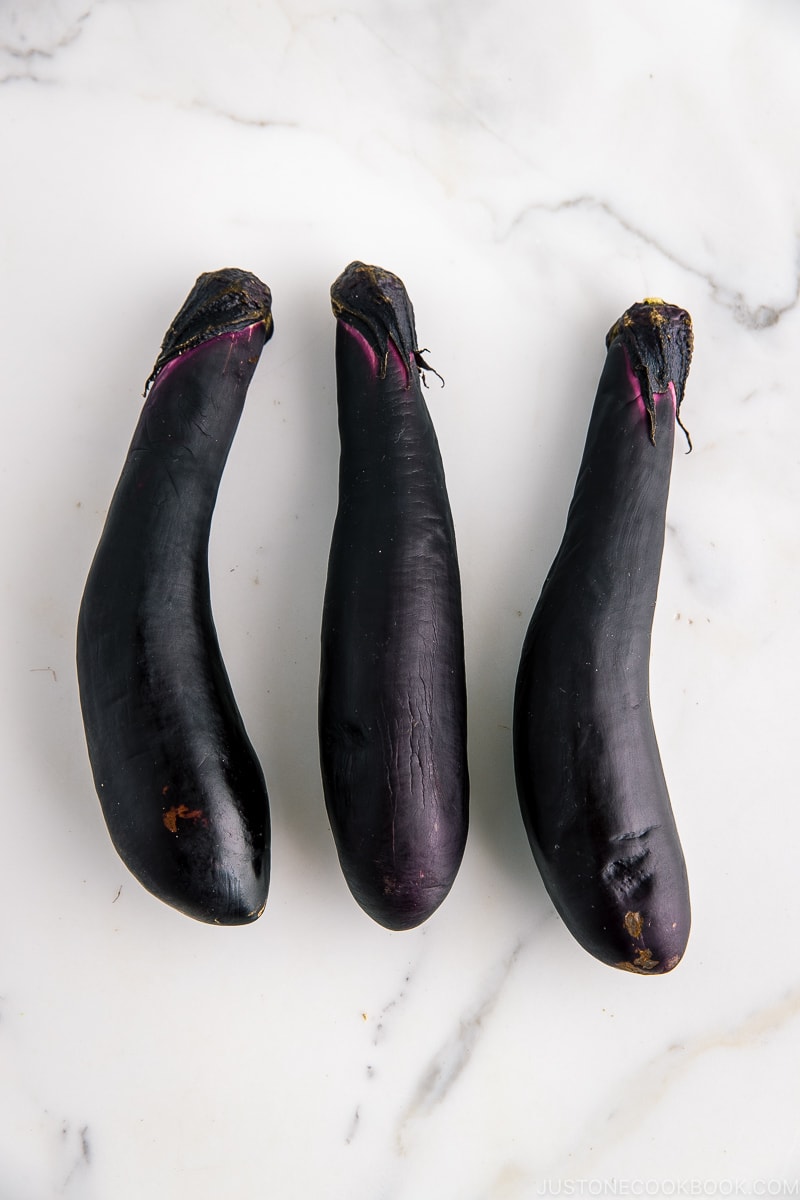
Called Nasu (茄子, ナス, なす) in Japanese, Japanese eggplant is typically long, slender, and oblong, about 20-25 cm in length. It comes in dark purple and has glossy smooth skin. The flesh is cream-colored, almost seedless, and spongy. Some classic side dishes using Japanese eggplant are nasu agebitashi and nasu dengaku.
What Is Japanese Eggplant
The Japanese eggplant (Solanum melongena) is long and slender with tender skin and soft, creamy flesh. They can be curved or straight with tapered ends and capped with a dark purple stem.
Like tomatoes, peppers, potatoes, and many other vegetables, eggplant is botanically a fruit that belongs to the nightshade family. Thanks to their unique texture and sponge-like ability, eggplants have been hailed as one of the best substitutes for meat for vegan and vegetarian cooking.
What Does It Taste Like
Japanese eggplants are mildly sweet and don’t have a bitter taste like regular eggplants.
What Is The Difference Between Japanese And Chinese Eggplants
Japanese and Chinese eggplants are long and skinny, so it can be hard to differentiate them. The difference is the color. Japanese eggplant tends to have a deeper purple, while Chinese eggplant usually has a lighter lavender purple. In terms of length, Chinese eggplant can be longer. Both have thin skin and do not contain many seeds.
One unique thing about Japanese eggplants is their ability to maintain their gorgeous dark skin when cooked, making it ideal for presentation. Compared to regular eggplants, Japanese eggplants cook faster and can soak up flavors quicker.
How To Use
Try cooking Japanese eggplants; deep-fry, grill, stir-fry, pan-fry, roast, or braise. It readily soaks up broths, sauces, and umami flavors. You can marinate slices like proteins in a mixture of mirin, soy sauce, and sake or cook in a miso glaze. Due to its mild flavor, you can pair it with strong spices and herbs like shiso leaves, Thai basil, garlic, ginger, and scallions.
Japanese eggplants take on a tender, meaty texture when cooked. As the skin is thin, it’s not necessary to peel the skin before use.
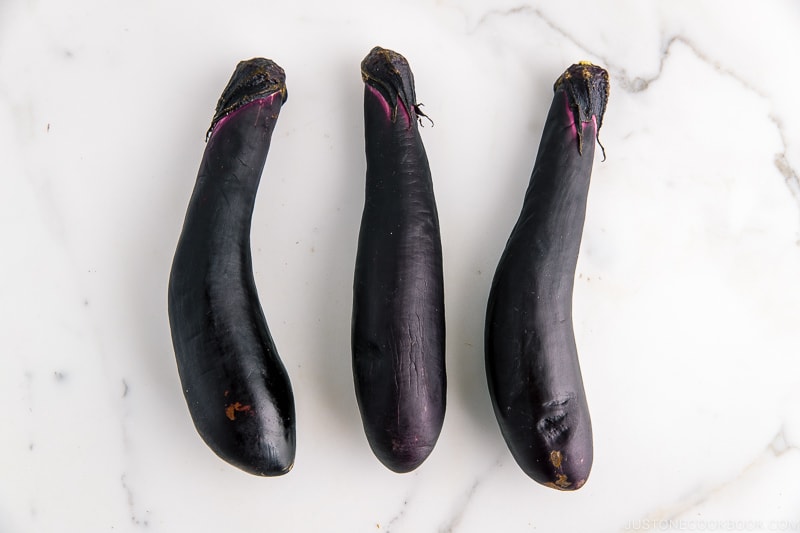
Recipes Using Japanese Eggplants
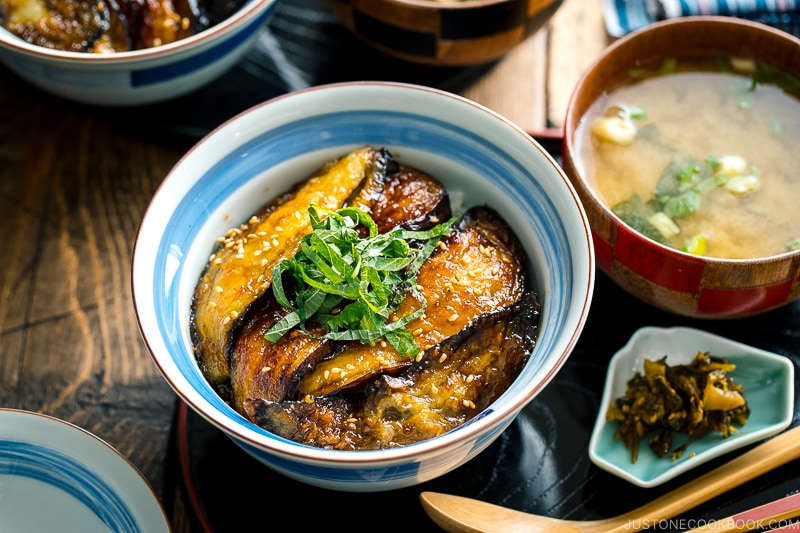
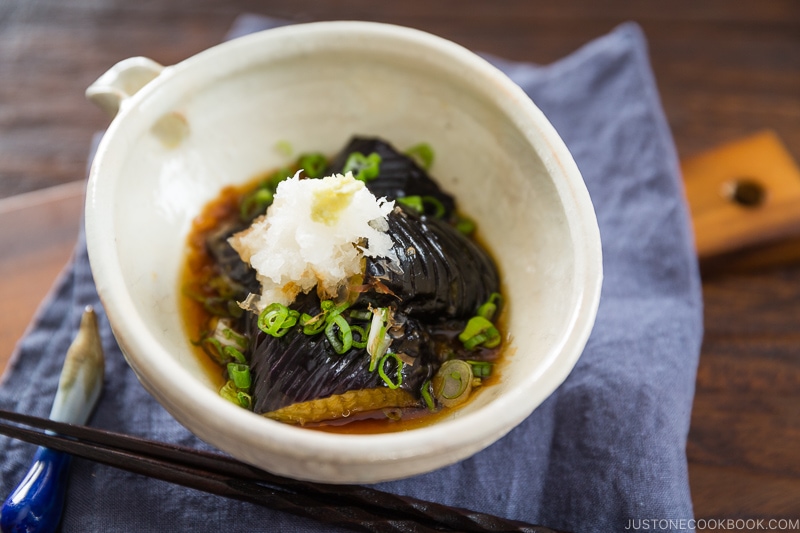
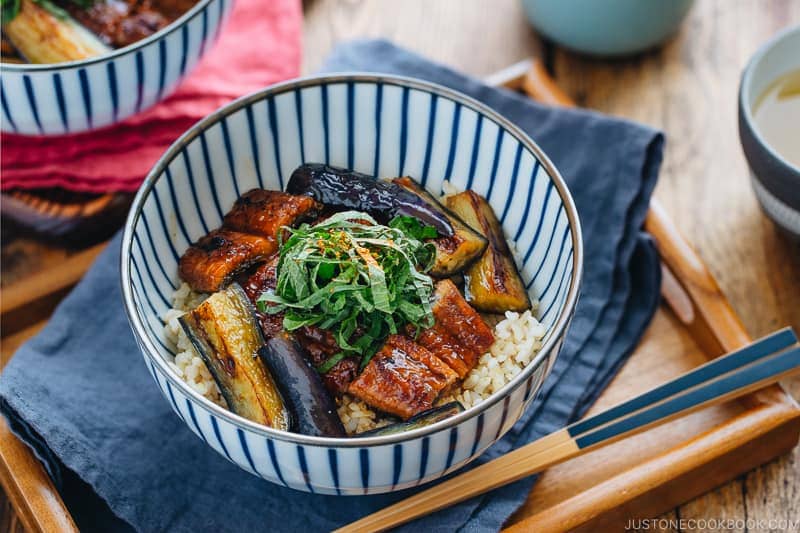
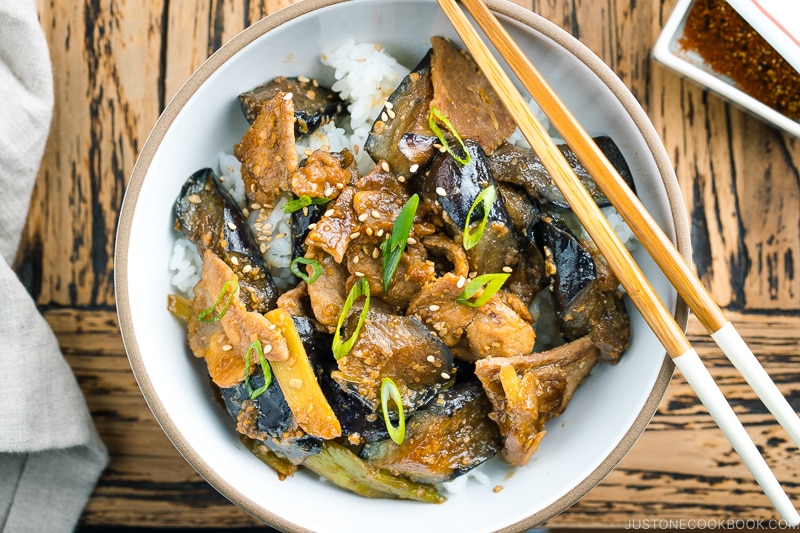
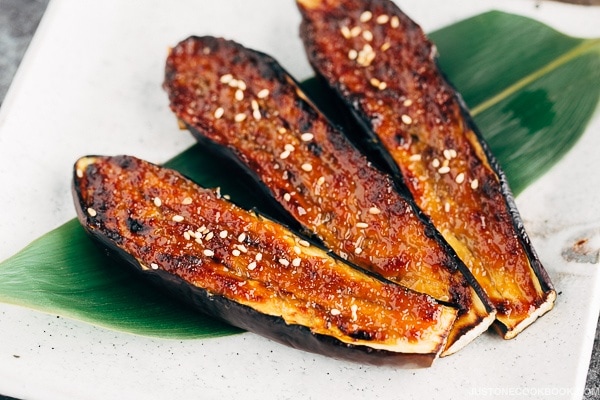
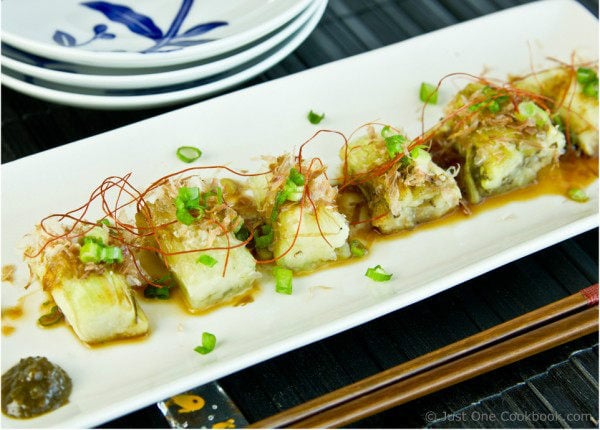
How to Choose The Best
When you’re looking for a quality eggplant at the grocery store, regardless of the variety, there are a few things to remember: it should feel heavy and dense for its size, and the skin should feel smooth and shiny with few blemishes. It should also feel firm with no soft or brown spots.
Where to Buy
You can find Japanese eggplants at Japanese or Asian grocery stores. You may find them at your local farmers’ markets as well.
How To Store
Eggplants generally have a short shelf-life, mainly water, and are sensitive to humidity and high temperatures. Refrain from storing at room temperature during the warm season. To prolong its freshness, wrap each in paper towels or newspaper, put it in a ziplock bag, and store it in the fridge for up to ten days. You can also freeze sliced uncooked eggplants in a ziplock bag. Use within a month.
Substitutions
Chinese eggplant is the best substitute. If not, the closest variety would be varieties like Italian eggplant, which are smaller. Other varieties of eggplant, such as the globe eggplant, are known for their bitterness, so adjust the seasoning to accommodate.
Health Benefits
Eggplants are low in calories. It’s a good source of vitamin C, fiber, and potassium. Vitamin C helps strengthen the immune system while reducing inflammation. Fiber helps regulate the digestive tract and potassium balances the fluid levels within the body.
Japanese eggplants contain nasunin, an antioxidant in blue and purple fruits and vegetables. It helps protect cells against free radical damage.
Wish to learn more about Japanese cooking? Sign up for our free newsletter to receive cooking tips & recipe updates! And stay in touch with me on Facebook, Pinterest, YouTube, and Instagram.

